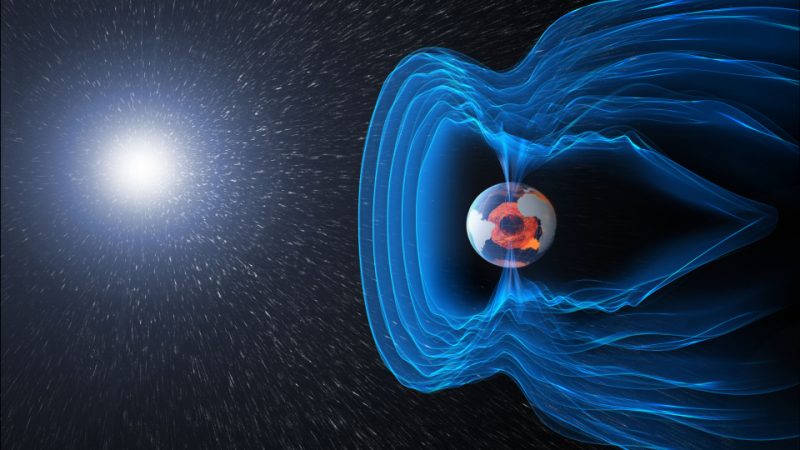
Earth’s magnetic field has flipped polarity repeatedly – and erratically – over the known history of our planet. The average time between polarity flips is 200,000 to 300,000 years, by some estimates. But the last magnetic reversal was 780,000 years ago. So, therefore, is the next flip imminent? A weakness of Earth’s magnetic field – in a spot in the ocean known as the South Atlantic Anomaly – has led some to believe a reversal might happen soon. However, a new study announced June 7, 2022, says … not so fast.
Researchers from Lund University and Oregon State University published their study in the peer-reviewed journal Proceedings of the National Academy of Sciences on June 6, 2022. They analyzed 9,000 years of evidence to show the South Atlantic Anomaly is probably not a sign of an impending pole reversal.
Understanding the South Atlantic Anomaly
Why have some scientists said that a magnetic pole flip could happen sooner rather than later? Their reason, particularly, focuses on the South Atlantic Anomaly. This is a region near South America in the South Atlantic Ocean where Earth’s magnetic field has grown weaker. Some researchers had been suspicious of this anomaly because, at the same time, Earth’s magnetic field strength has decreased by about 10% in the last 180 years.
One of the effects of this weak magnetic field region is that satellites passing over this area have malfunctioned from exposure to highly charged solar particles. Our magnetic field provides a protective barrier between Earth and radiation from space. Consequently, where the magnetic field is weaker, life and technology are more at risk from the effects of harmful radiation.
However, the new research says the anomaly is probably not special but a recurring event. As lead author Andreas Nilsson of Lund University explained:
We have mapped changes in the Earth’s magnetic field over the past 9,000 years, and anomalies like the one in the South Atlantic are probably recurring phenomena linked to corresponding variations in the strength of the Earth’s magnetic field.

Evidence shows magnetic pole flip not imminent
The scientists in the new study looked at 9,000 years of evidence to show that the weakened magnetic field in the South Atlantic Ocean is not unique. The evidence they examined included burnt archaeological artifacts, volcanic samples and sediment drill cores. All of this evidence carries a history of information about the Earth’s past magnetic field.
Objects such as clay pots that have been heated up to over 580 degrees Celsius (1,000 degrees Fahrenheit), volcanic lava that has solidified, and sediments that have been deposited in lakes or in the sea are like time capsules to the scientists. The scientists can measure magnetizations of the objects and recreate the direction and strength of the magnetic field at specific places and times.
Nilsson explained:
We have developed a new modeling technique that connects these indirect observations from different time periods and locations into one global reconstruction of the magnetic field over the past 9,000 years.
With this reconstruction, the scientists were able to conclude that the South Atlantic Anomaly is not a sign of a polarity reversal to come. In fact, they said the South Atlantic Anomaly won’t last much longer. Nilsson summed up:
Based on similarities with the recreated anomalies, we predict that the South Atlantic Anomaly will probably disappear within the next 300 years, and that Earth is not heading towards a polarity reversal.

Bottom line: Is the South Atlantic Anomaly a sign that a magnetic pole flip on Earth is imminent? Not according to researchers who analyzed 9,000 years of Earth’s magnetic field history.











